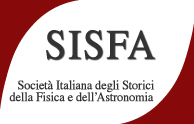Speaker
Description
Angelo Catone was a natural philosopher, physician and astrologer from Benevento who lived at the end of the Middle Ages. In Naples, he was a reader at the University, having excellent relations with the Aragonese court, becoming superintendent of the library of King Ferrante I and personal physician of Frederick of Aragon. At the court of France, Catone was a counsellor and royal physician of Louis XI and Charles VIII, and also the protagonist of Parisian cultural life and appointed as archbishop of Vienne in the Dauphiné.
In 1472, Angelo Catone published a text on the great comet C/1471 Y1, which he called Pogonias, or bearded. De cometa 1472, a rare incunabulum, was probably printed by Sixtus Riessinger, who introduced movable type printing in Naples. With exceptional brightness with a tail estimated at 36° and a coma as big as the Moon, this comet was illustrated in the Liber chronicarum of 1493 by the German physicist Hartmann Schedel, observed and described by Regiomontano in the De cometae magnitudine printed in 1531. Müller's volume was the first scientific description of a comet in Europe, and the book of Catone was among the first astronomical texts published in Italy, along with the much more authoritative Tractatum de Spera by Sacroboscos.
The communication presents the figure of Angelo Catone, the astronomy of the comet according to the Aristotelian tradition, and the social and political predictions described by the physician from Benevento.

